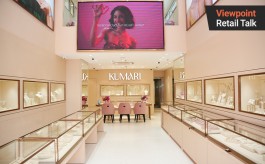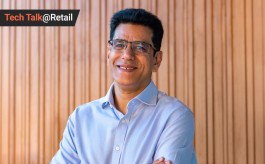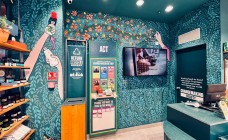Building a case for ROI driven, imaginative retail design
By Niranjan Talekar | May 13, 2024
Who says business and creativity can’t go together? All it needs is some imagination, flexibility, and close understanding of client and market needs, says Deepak Puri, Principal Architect of Deepak Puri Architects & Interior Designers, in this exclusive interaction with Retail4Growth as part of our new series, ‘The Business of Design’.

What’s common between the iconic sci-fi movie series ‘Transformers’ and retail design? Plenty, as Deepak Puri, Principal Architect of Deepak Puri Architects & Interior Designers, points out. "Just as the Transformers reinvent themselves for every new battle, retail spaces must evolve to captivate the next generation of consumers," says the experienced industry professional in this exclusive interaction with Retail4Growth, wherein he talks about future-forward retail environments that adapt, engage, and inspire. In the process, he sets the context for the future of Indian retail design industry.
Deepak essentially highlights the critical need for thoughtful design that enhances customer experiences, integrates technology, and responds flexibly to market dynamics. These become even more critical today given the rising pressure on retail designers to deliver ROI for their retail clients. As Deepak points out, “Brands are definitely looking more at ROI now and at numbers. Instead of rolling out more stores, the focus is on less number of stores but with better ROI and this means putting the money in better services.”
Given these dynamics, what‘s the ahead for the Indian retail design industry? Deepak lists out a few ways.
Designing for flexibility and efficiency
Deepak stresses on adaptability of retail spaces and underscores the necessity for stores to be designed with flexibility, allowing for changes in product categories or consumer preferences with minimal adjustments. This also means flexibility in solutions like fitouts and lighting systems so that they are in sync with evolving categories. He cites the example of a store that transitioned from selling women’s wear to lingerie and footwear by merely altering fixtures and displays.
Furthermore, he advocates for energy-efficient designs, such as dimmable lighting and smart building management systems, which not only reduce operational costs, but also contribute to creating the desired store ambience. “If we had smart building management systems by which, say, the lux levels can be automatically adjusted, additional cost incurred can be recovered in just energy savings in one month to six months.”
Tech is good, when supported by human imagination
The growing integration of digital technology in retail design is another step towards making store design drive ROI. Deepak shares examples to reiterate the importance of innovative thinking that can deliver multiple functionalities for the same tool – like smart mirrors that can also become digital displays. But these technologies, as Deepak points out, can grow only when supported by proper maintenance the right eco system and hence the need for training and collaboration. “I think technology is in a way helping deliver better ROI. But we must remember that technology is just a tool and it is futile without human intelligence and imagination,” he adds making a very important point.
Designers versus Consultants
Deepak also passionately argues for designers to take on roles as consultants who can guide and even challenge their clients when needed. He believes that designers should not merely execute but should advise on best practices, market trends, and customer engagement strategies. And this also means, as he points out, understanding returns per square foot and working towards budgets-focused solutions that deliver the stated objectives.
This in fact brings up the question of whether spends on retail design are going up? Deepak replies, “It has gone up tremendously. What used to be Rs 3000-4000 per square foot is now around Rs 8000 to 9000 per square foot. But then costs have also gone up, especially input and manpower costs etc.” Further, in response to the question of how the Indian retail design industry is growing, he says, emphasising the difference between retail design and consultancy, “In terms of the number of players who position themselves as designers, I’d say the industry is growing tremendously. But in terms of retail consultancy, I’d say it is actually shrinking and getting narrowed down to just about 10 players in the country.”
Grooming versatile designers
For any field to move forward and live up to its true potential also means grooming and having in place the right talent or manpower. In the context of retail design, Deepak stresses the importance of creativity and forward-thinking, and encourages designers to expand their knowledge beyond traditional fields, explore new ideas and be versatile and responsive to new challenges. This also means having a system in place that goes beyond outdated concepts and encourages out-of-box thinking.
Navigating the evolving landscape of Retail Design
In conclusion, Deepak Puri’s insights highlight the evolving landscape of retail design, where exceptional customer experiences are paramount. The crux of it is that the future of retail design is not just about aesthetics, but about creating environments that are dynamic, sustainable, and aligned with consumer behaviours and expectations.









Comments